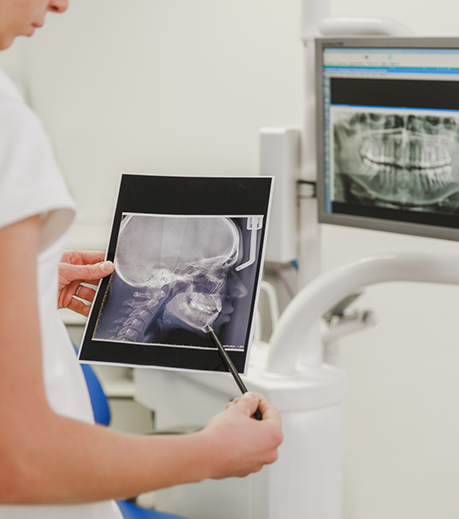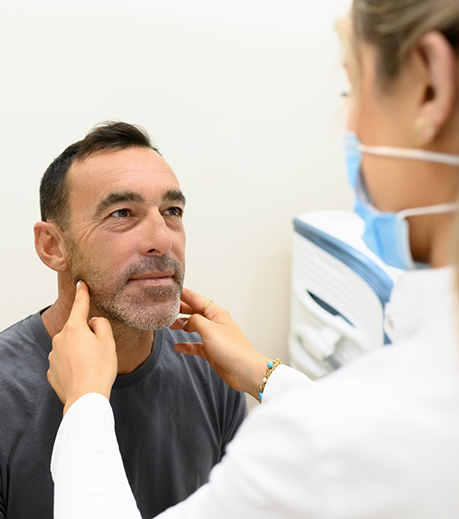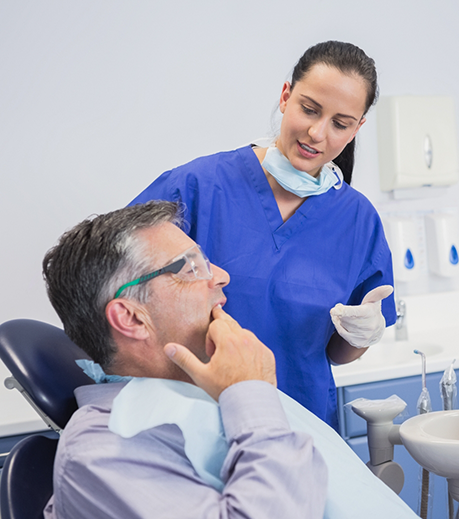Dentofacial Orthopedics Cumming
Improving More Than Just Teeth

“Dentofacial orthopedics” is a term most people haven’t heard of, but it’s a type of treatment that many patients can benefit from. While traditional orthodontics can help move the teeth to make them more functional and straight, dentofacial orthopedics can be used to adjust the bones of the face and jaw that support the teeth. This cannot only create a more symmetrical and attractive face, but it can also correct bite misalignments that can’t be handled by braces alone.
At Serenity Orthodontics, we’ve used it to help countless children and adults achieve gorgeous smiles while also avoiding invasive surgery. Could it be exactly what you or your child needs? To find out, give us a call today to schedule a FREE consultation to discuss dentofacial orthopedics in our Cumming orthodontic office.
Why Choose Serenity Orthodontics for Dentofacial Orthopedics?
- More Than a Decade of Experience Among Three Certified Orthodontists
- Available Appliances for Children and Adults
- Non-Invasive Alternative to Corrective Jaw Surgery
What Are Dentofacial Orthopedics?

Dentofacial orthopedics are used to correct problems and guide the development of the bony structures that support the teeth. This can include the jaw and nearby facial bones that directly influence the alignment of the bite. Typically, dentofacial orthopedics consists of a combination of braces and removable oral appliances that direct the growth of the jawbones. Usually, it’s integrated as part of a patient’s general orthodontic care, because without the underlying bones being in the right place, straightening the teeth can be extremely difficult if not impossible.
How Dentofacial Orthopedics Are Used

In most cases, dentofacial orthopedics is used to address bite alignment problems like advanced overbites, underbites, and crossbites. Often, the reason the teeth aren’t coming together as they should has nothing to do with the teeth themselves. Rather, one of the jaws may be underdeveloped compared to the other. Dentofacial orthopedics can help stimulate jawbone growth to create a functional and healthy bite. As a result, this can also give a patient a more defined jawline and fuller-looking face, making more than their smile look dramatically better.
Dentofacial Orthopedics for Adults & Children

Ideally, dentofacial orthopedics are used with children because the bones of their face and jaw aren’t fully set yet, which means they will be more responsive to treatment. However, this approach is still effective for adults, though treatment is usually a bit slower. For many adults, dentofacial orthopedics can fix problems found in their smile that weren’t addressed using braces or a clear aligner treatment. Plus, it helps many people avoid the need for corrective jaw surgery, saving them time, pain, and expense.
Dentofacial Orthopedics FAQs
What Kind of Equipment is Used in Dentofacial Orthopedics?
Your dentofacial orthopedic treatment may require one or more of the following types of equipment to achieve your desired results:
- Headgear: Headgear is one of the most common appliances utilized dentofacial orthopedics. It attaches to the patient's head and face and is used to apply pressure to their teeth and jaws to encourage them to move into the correct position.
- Expander: An expander is an appliance that is used to widen the upper palate and is often used in conjunction with headgear.
- Braces: Braces are used to straighten the teeth. There are a variety of types of braces that can be used in dentofacial orthopedic treatment, including metal, ceramic, and clear aligners.
- Retainer: Retainers are used to hold or “retain” the teeth in their new position once the dentofacial orthopedic treatment is completed.
What is the Difference Between Dentofacial Orthopedics and Orthodontics?
While both dentofacial orthopedics and orthodontics both have the same goal of improving your oral health and creating a gorgeous smile, they do have some very important differences in their approach.
- Orthodontics focuses mainly on the alignment of your teeth by using appliances like braces (metal or ceramic), clear aligners, and retainers, to guide the teeth into a more desirable position. They can address problems such as crooked teeth, overcrowding, bite problems, and gaps between the teeth.
- Dentofacial orthopedics encompasses more than just the positioning of the teeth. It also affects the underlying skeletal system of your face and jaws by focusing on correcting imbalances in the growth and development of the jawbones, including issues like overbites, underbites, and crossbites.
Can Adults Benefit from Dentofacial Orthopedics?
If left untreated, jaw problems that originate in early life may not necessarily cause any discomfort in adulthood but may still cause issues like speech difficulties, uneven tooth wear, tooth damage, and temporomandibular joint (TMJ) problems.
Although adults may not have as many options to correct their bite as a child who is still growing, there are still some ways dentofacial orthopedics can help. These may include procedures such as orthognathic (jaw) surgery.
Is Dentofacial Orthopedic Treatment Painful?
Though it varies by patient, the number one factor that determines the discomfort of your treatment is the severity of your oral condition. Thankfully, most patients say that dentofacial orthopedic treatment causes only mild discomfort and can usually be treated with over-the-counter pain relievers.

